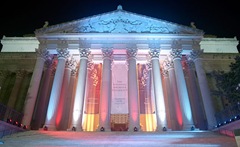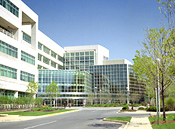I recently made my first visit to the National Archives and Record Administration (NARA). This is the first in a series of articles inspired by that visit to help you make your first visit to the National Archives.
 Have you ever thought about visiting the National Archives and Records Administration (a.k.a. the National Archives, or simply, NARA) in Washington DC? I have for years. When a job assignment took me to Washington DC, I took the opportunity to make my first visit. I thought if I shared what I learned, maybe some of you might be emboldened enough to try it also. I learned a lot. There is so much to share; where should I begin?
Have you ever thought about visiting the National Archives and Records Administration (a.k.a. the National Archives, or simply, NARA) in Washington DC? I have for years. When a job assignment took me to Washington DC, I took the opportunity to make my first visit. I thought if I shared what I learned, maybe some of you might be emboldened enough to try it also. I learned a lot. There is so much to share; where should I begin?
I and II
In my riddle last week I pointed out that NARA has two locations in the Washington DC area. Archives I is the original NARA building downtown where Nicholas Cage stole the Declaration of Independence. Archives I contains virtually all collections of use to genealogists. These collections include census, military (pre-WWI and WWI Navy, immigration, naturalization and other records.
NARA’s collection became too large for their downtown facility. Some libraries switch from open stacks to closed stacks when running out of space. NARA may have always had closed stacks to protect and preserve the precious records of our nation’s past. (If you know, leave us a comment.) To deal with their space issues and to handle new technologies, NARA built a second facility in the greater DC area on land provided by the University of Maryland (UM) in College Park. An official at the conference last week thought that NARA might be paying a dollar a year, or some arrangement like that, for use of the land. (I gathered from the conference that UM has excellent library and/or archive programs and that the two have a lot of synergy.)
 Archives II, as the College Park location is known, houses collections in photographic, audio, video and electronic formats as well as old technologies such as architectural drawings and maps. This doesn’t mean there isn’t anything useful for genealogists at Archives II. But a typical patron is not typically going to find information specific to a typical ancestor.
Archives II, as the College Park location is known, houses collections in photographic, audio, video and electronic formats as well as old technologies such as architectural drawings and maps. This doesn’t mean there isn’t anything useful for genealogists at Archives II. But a typical patron is not typically going to find information specific to a typical ancestor.
During normal business hours (M-F, 8am-5pm), a staff shuttle runs every hour, on the hour, from each location to the other. On a space-available basis, researchers can also use this free service. I never rode the bus, so I can't give you exact information. Catch the shuttle at Archives I at the Metrobus shelter located on 7th Street between Pennsylvania and Constitution Avenues. At Archives II, use the shuttle bus stop adjacent to the archives building. The two locations are 10 miles apart. Google estimates the travel time to be about 24 minutes, but I imagine it actually takes 30 minutes or more.
No comments:
Post a Comment
Note: Only a member of this blog may post a comment.